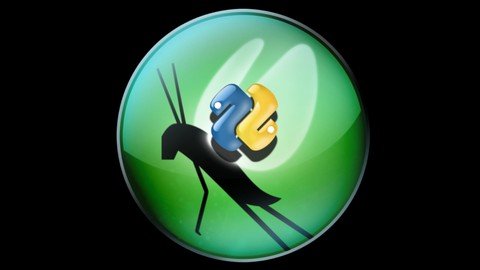
Last updated 10/2021
MP4 | Video: h264, 1280×720 | Audio: AAC, 44.1 KHz
Language: English | Size: 1.29 GB | Duration: 4h 39m
{ Locust Performance Testing Framework – Complete Project Architecture & Advanced Event Reporting }
What you’ll learn
In-depth understanding of locust and its features
Performance framework development with python from scratch
User session management and cookies handling
User loading from CSV
Locust event hooks and listener
InFluxDB and Grafana integration with locust
Locust Master-Slave execution model
Locust Execution With Configuration File
Requirements
Basic python knowledge
Description
Section-1 : you will learn the basic concept of locust and standard features. a. Setup development environmentb. Explanation of User, TaskSet and Sequential TaskSetc. Explanation on_test_start, on_test_stop, on_start, on_stopd. REST execution using locust HTTPUser classSection-2 : you will learn how to use locust to create a concrete performance test framework to perform load and stress testing on your application under test, you will also learn how to integrate with InfluxDB and Grafana for better performance data analysis.a. Abstract HTTPUser class and usageb. TaskSet Modules and User Integrationc. Loading Users from CSVd. User Login & Session Managemente. Multiple User Types & Distributionf. Registered & Guest User Cookieg. Custom Logger & Step Loadh. Event Hooks & Request Data Storei. Request Data Store in InfluxDBj. Grafana & InfluxDB integrationSection-3 : you will learn different execution model of locust which include master-slave configuration as well. In section4 you will get to know few extra topics of locust which might be useful for your specific project.a. Locust Master-Slave architecture modelb. Locust execution with config fileSection-4 : Extra topics which will help to design your own framework and clear report analysis concepts.a. INIT Event, Tagging Tasks, Custom Client, Stats in CSV, Locust as libraryb. Unique Users Distribution For Master-Worker Execution Modelc. Significance of Mean & Standard Deviation Calculation
Overview
Section 1: Locust Setup & Basic Features
Lecture 1 Basic Concept of Locust
Lecture 2 Setup Development Environment
Lecture 3 Explanation of User, TaskSet & Sequential TaskSet
Lecture 4 Explanation on_test_start, on_test_stop, on_start, on_stop
Lecture 5 REST execution using locust HTTPUser class
Lecture 6 Practice with attached locust files
Section 2: Project : Locust framework development from scratch
Lecture 7 Locust framework & project architecture
Lecture 8 Abstract HTTPUser class and usage
Lecture 9 TaskSet Modules and User Integration
Lecture 10 Loading Users from CSV
Lecture 11 User Login & Session Management
Lecture 12 Multiple User Types & Distribution
Lecture 13 Registered & Guest User Cookie
Lecture 14 Custom Logger & Step Load
Lecture 15 Event Hooks & Request Data Store
Lecture 16 Request Data Store in InfluxDB
Lecture 17 Grafana & InfluxDB integration
Lecture 18 Project source code walk-through
Section 3: Locust execution model
Lecture 19 Locust Master-Slave architecture model
Lecture 20 Locust execution with config file
Section 4: Miscellaneous topics
Lecture 21 INIT Event, Tagging Tasks, Custom Client, Stats in CSV, Locust as library
Lecture 22 Unique Users Distribution For Master-Worker Execution Model
Lecture 23 Significance of Mean & Standard Deviation Calculation
Performance engineer, Automation engineer, Tester, Developer
Password/解压密码www.tbtos.com
转载请注明:0daytown » Locust & Python – Modern Performance Testing Framework